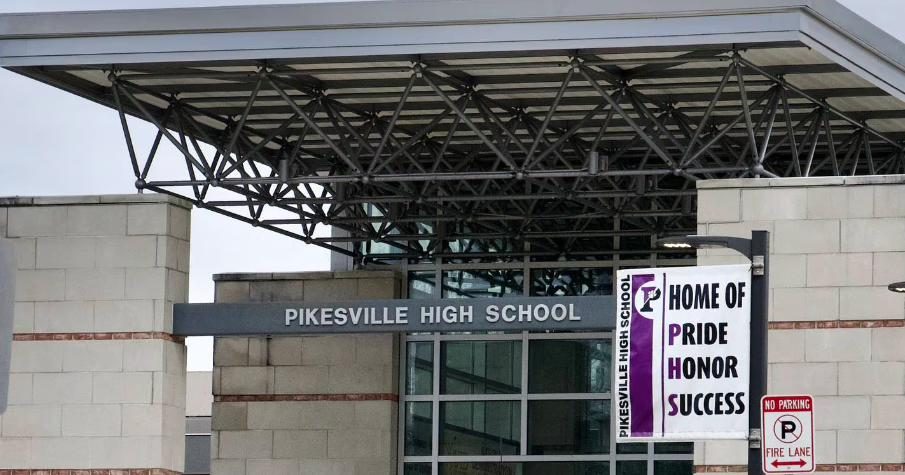Md. Artist Uses Barns As Canvas
CUMBERLAND, Md. (AP) -- Tucked between two grain silos in the gray and white of winter is an old Maryland dairy barn spray-painted with monsters. There's a droopy-eyed Technicolor slug with fangs and horns and a catlike character with big teeth and plump Hollywood lips.
The creatures are the first offspring of a rural street-art experiment launching from Montgomery County that intentionally avoids lovely country scenes and sunsets. The goal is to bring contemporary art to pastoral places by painting a barn in each Maryland county and pairing the artwork with poetry.
The project is being curated by John Shipman, director of the University of Maryland's art gallery. He likes the idea of presenting jarring works to people who don't show up in the cloistered world of art exhibits. In his years perusing galleries throughout the country, he's encountered snobbery, boorishness and revelation between bright gallery walls.
"I think probably 90 percent of it is bunk," Shipman said. "The 10 percent of it you get is possibly life-altering."
Eventually, Shipman said, he hopes to have one barn-canvas in each of Maryland's 23 counties. The artist he chose for the project is Bill Dunlap, a former designer for the Travelocity Web site whose wild, playful and disturbing images have been pasted along New York streets. Now, they are staring from a weathered barn on Hawkins Creamery Road, 30 miles north of the White House.
Shipman's summers in rural Maryland left him captivated by the beauty and artistic opportunity of farm buildings. A stunning gallery he visited in a converted feed-and-seed store stuck in his memory, as did the work of the Barnstormers, a group of New York and Tokyo-based artists who have painted barns and farm equipment in rural North Carolina.
Shipman is also drawn to art that incorporates text. He has made vast and detailed murals, as well as small paintings and drawings that incorporate poetry. They include one- or two-line poems originally written for his wife and the words of Ralp Waldo Emerson. An exhibit opening next month at the University of Maryland gallery called "Poetic. Aesthetic." will pair Maryland poets with visual artists.
Shipman said he wants the barns to be tucked away, gems to be discovered.
"What we really want is for you to have to go find these," he said. "That's sort of a metaphor for both good poetry and art."
Shipman had long admired Dunlap's work and thought he would be the right match for the disturbing prison imagery in the poetry of R. Dwayne Betts, who turned his incarceration for carjacking into a redemption story. Shipman also thought Dunlap had the right eye for the barn project.
Dunlap had ridden the dot-com boom, turning Santa Claus illustrations and design work for Travelocity and other clients into a thriving Web-development business. "Then the whole thing, within two years, imploded," he said. "But it was fun while it lasted."
Dunlap had put away enough money to move with his wife from San Francisco to Cumberland, near where he grew up. He built a studio, focused on his artwork and lived a changed life. He had been an alcoholic for more than two decades before he started exploring Zen Buddhism, quit drinking and became a long-distance runner and vegan.
His more playful creatures can look cartoonish, but they're different from the soft, round imagery of Disney. Dunlap said he thinks of the distinction this way: If you're falling toward Earth and happen to land smack-dab on top of Mickey Mouse, "you'd bounce." Drop on one of his creatures, though, and "you might be pierced by a big horn."
Some of his work has veered toward the dark and grotesque. At one point, his mother voiced concern. "She did worry about the horns and fangs," Dunlap said.
"My father died when I was young. That's probably what made me angry for so long," he said. "I feel that's honestly a part of how I see the whole world. Nobody's going to bluff me and say, 'Everything's going to be just fine.' It may be just fine. But there's going to be violence and death and pain. It would be a lie to make anything other than that. I wouldn't be happy with that."
Artists Foster Holcombe and Theda Hansen agreed to host the first barn. They had transformed a former milking barn in Laytonsville for their glass-blowing operation, Art of Fire.
Shipman had stopped by their property once while driving home, and they seemed receptive. He later brought Dunlap by to meet them.
Dunlap gave Hansen a poster of one of his works, and she gave him the go-ahead. "You have to trust people," Hansen said.
Neighbors have had mixed reactions. One who lives in a nearby log cabin appreciates it. Another, not so much. "Most people really like it, but there are a few people who question our taste in art," she said.
It took Dunlap three days, setting out from Cumberland at 4 a.m. and working until dark, to finish the barn, which shelters the ingredients for an adjacent glass-making shop. He stood on a ladder, spraying dozens of cans of donated Montana brand paint.
"It's so much fun to just paint as high as you can reach," said Dunlap, who would run up and down a nearby hill to get a view of the progress.
Among the fuchsia flowers as big as cacti is a figure that looks something like a yellow and purple Jabba the Hutt with striped tentacle-antlers. His companion seems friendly enough, but not incapable of going off.
"If I am going to do it, I'm going to do it with all the energy I have. All my whole life goes into it."
At times, Dunlap said, he felt exposed. When a group of farmworkers approached in the back of a truck, he put his brush down and hid in the barn until they were gone.
He chose a poem called "Lost" by David Wagoner, which he painted in the sky between the two monsters.
... The forest breathes. Listen, It answers, I have made this place around you.
If you leave it, you may come back again, saying Here.
No two trees are the same to Raven.
No two branches are the same to Wren ... Hansen hadn't read the words before, but they resonated deeply.
"My second son committed suicide. There's a raven around here," Hansen said. When the family comes together, Hansen and the others have a tradition of looking up for the raven and sending their love to her son Craig.
"This one comes. It's on the tip of the tree and it talks to us," Hansen said. "We liked the poem so much. It sort of is our poem. He just put it up there."
(Copyright 2010 by The Associated Press. All Rights Reserved.)



